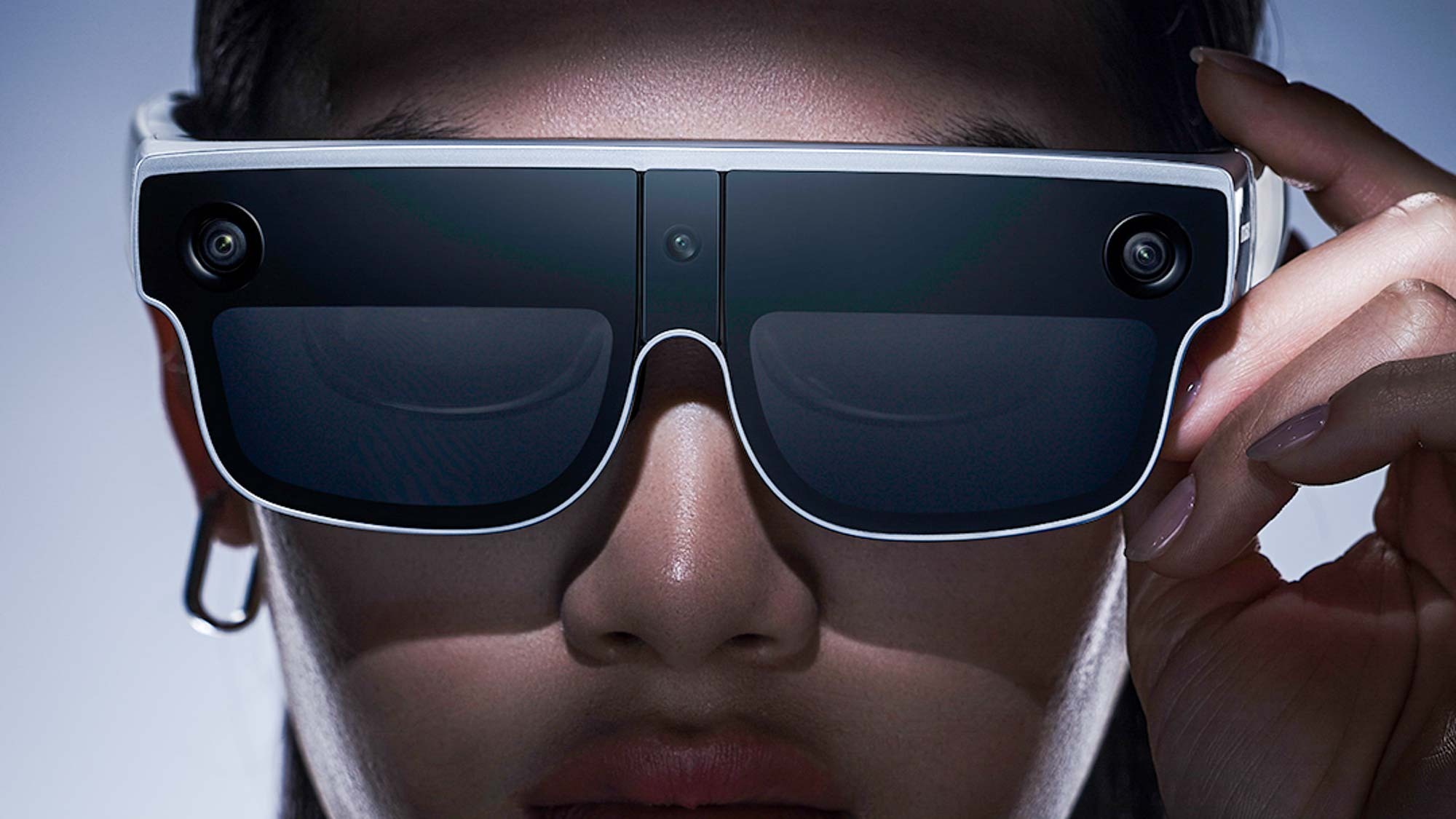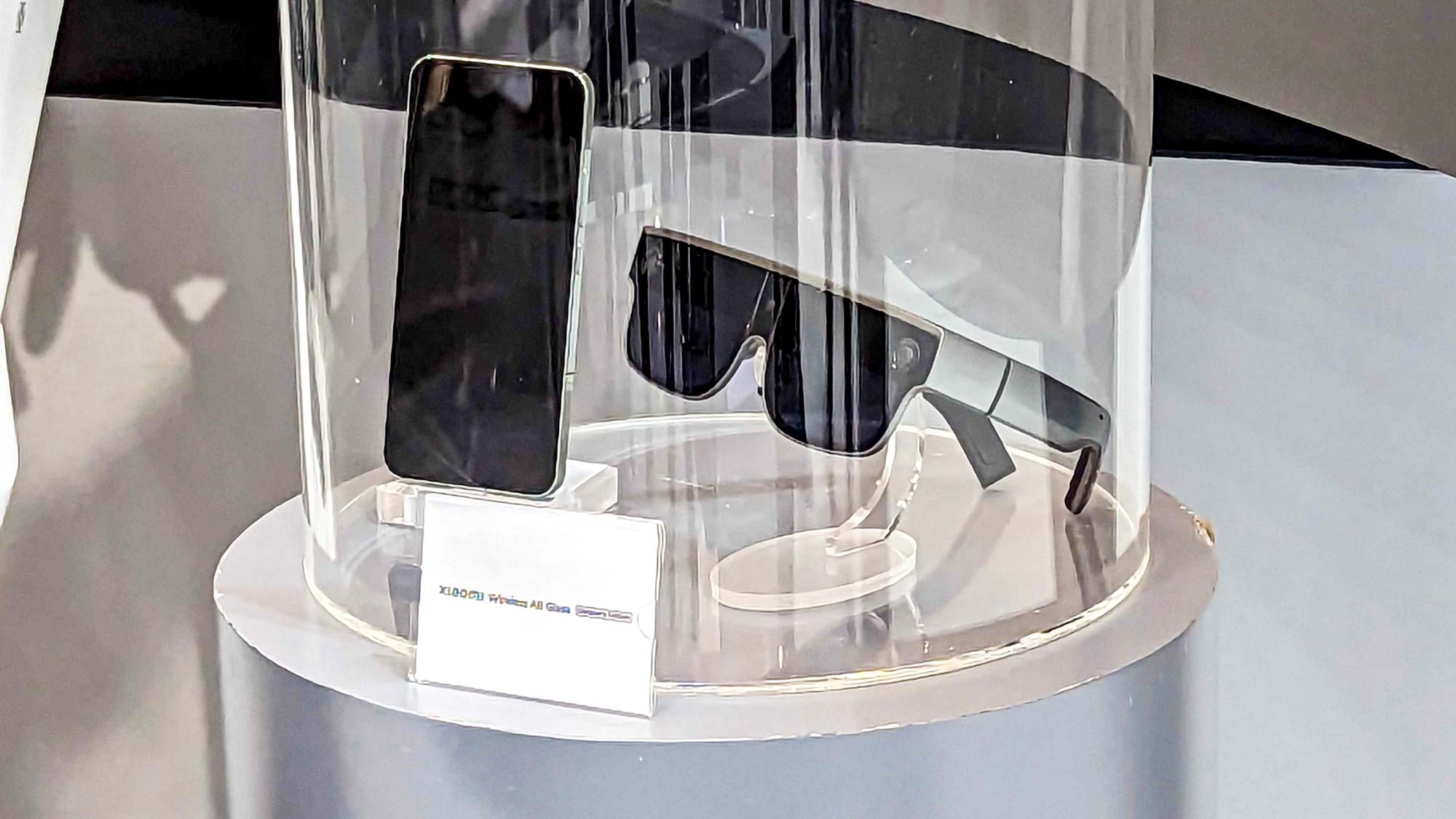Xiaomi’s new AR glasses — great in concept, but AR’s problems remain
There’s a reason these AR glasses are still just a concept

When most people think of AR glasses, they think of Google Glass or maybe the reportedly delayed Apple Glasses. After MWC 2023, though, there’s a chance Xiaomi just entered that augmented reality conversation.
But even with a great concept design to show off at this week's trade show, Xiaomi finds itself in the same position as other companies who've dealt with AR — struggling with the concept despite a relatively impressive showing.
Xiaomi AR glasses: The future of AR is wireless
At MWC 2023, Xiaomi unveiled the Wireless AR Glass Discovery Edition, a concept design for augmented reality glasses. The glasses promise some incredible features, from advanced hand tracking to revolutionary displays. But the biggest headline is that the Wireless AR Glass Discovery Edition is completely wireless, as its name might imply.
Boasting a retina-level near-eye display for AR glasses, Xiaomi Wireless AR Glass Discovery Edition delivers a truly immersive visual experience. Moreover, our self-developed Xiaomi AR Gesture Control empowers effortless control between virtual and real space. pic.twitter.com/EipqBWxkpWFebruary 27, 2023
The Discovery Edition promises a wireless link to your smartphone with latency as low as 50ms. To pair the smart glasses to your smartphone, NFC technology allows you to just tap your phone to the side of the glasses — though you may want to pair before heading out as it's definitely a noticeable gesture.
While wireless connectivity may not seem like a big deal to some, it would represent a small leap forward in what’s currently available for consumers. Many recent AR glasses, like the TCL Nxtwear G smart glasses, require a cable to tether the AR glasses to a smartphone.
However, Xiaomi was always going to need to feature wireless connectivity on the Discover Edition to stay in line with the competition. Google and Apple’s rumored AR glasses will almost certainly be wire-free, and TCL’s latest concept also appears to be ditching wires as well.
At CES 2023 last month, TCL announced the RayNeo X2 AR glasses, its own attempt at wireless AR glasses. These glasses aren’t available for normal consumers yet — TCL is currently limiting them to developers, but Xiaomi needed to keep pace with TCL and that made wireless connectivity a must.
Xiaomi AR glasses: Powerful features that could price out consumers
Aside from the wire-free connectivity, other features that stand out are the processor and the displays. The Discover Edition features a Qualcomm Snapdragon XR2 Gen 1 processor — the same platform found in the Meta Quest Pro. Given that the Quest Pro costs $1,499, that guarantees that the Discover Edition won’t be cheap if it is ever available to the masses.
The displays are also unlikely to keep the price down. Xiaomi says that the microOLED displays can crank out a peak brightness of 1,200 nits and pixels per degree (PPD) resolution of 58 PPD. Xiaomi refers to this as a “retina-level display” because it nearly hits the 60 PPD mark where the human eye can no longer distinguish the display, making it appear as if the user was seeing things through their own retina.
Xiaomi AR glasses: AR’s biggest issues unresolved

As much of a step forward as the Xiaomi Wireless AR Glass Discovery Edition seem like — and it is a technical step forward — the smart glasses highlight the issues with AR glasses that prevent them from becoming mainstream.
First, the glasses are likely to be fairly expensive. It would be surprising to see the AR glasses be affordable for the average consumer, especially with a beefy processor, advanced hand tracking, “retina-level” displays and many features besides. VR headsets are seeing similar price concerns hamper their mass acceptance.
Second, these AR glasses are still bulky and awkward despite Xiaomi’s lightweight 126g design. They aren’t likely to blend in when you wear them, an issue that was partially to blame for the failure of Google Glass, which was comparatively subtle even if its users weren’t. For AR glasses to succeed, they will need to blend in as much as possible.
Finally, early hands-on testing indicates that the AR glasses don’t hold a ton of juice. While we haven’t yet gone hands-on, XDA did and the AR Glass Discovery Edition's battery didn’t even make it through a 30-minute demo. For mass appeal, they’ll at least need to survive a couple of hours.
When you add up all these factors, it's easy to see why these are still a concept, despite the impressive tech they pack. It’s also easy to see why Apple, a company with a CEO that thinks AR is the future and nearly unlimited money still is struggling with its rumored Apple Glasses. Until AR tech can become affordable or practical — if not both — cool concepts like the Discovery Edition will remain exactly that.
Sign up to get the BEST of Tom's Guide direct to your inbox.
Get instant access to breaking news, the hottest reviews, great deals and helpful tips.

Malcolm has been with Tom's Guide since 2022, and has been covering the latest in streaming shows and movies since 2023. He's not one to shy away from a hot take, including that "John Wick" is one of the four greatest films ever made.
